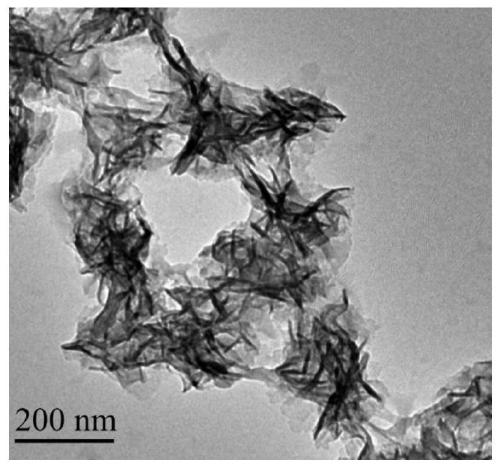A gene nanoprobe for targeted lung cancer treatment and its preparation method and application
A nano-probe and gene technology, applied in the field of biochemical nano-materials, can solve problems such as easy complications, poor effect, long treatment cycle, etc., and achieve good therapeutic effect, good synergistic therapeutic effect, and less toxic and side effects Effect
- Summary
- Abstract
- Description
- Claims
- Application Information
AI Technical Summary
Problems solved by technology
Method used
Image
Examples
preparation example Construction
[0046] The present invention also provides a method for preparing the gene nanoprobe described in the above technical solution, comprising the following steps:
[0047] 1) Mix DNA self-assembled single strands and circular DNA templates in Tris-HCl buffer for annealing treatment. The conditions of the annealing treatment are: 95°C, 5min, and then reduce to 16-16°C at a rate of 0.5°C / min. At 28°C, a three-fork self-assembled structure carrier was obtained;
[0048] 2) Mixing the three-fork self-assembly structure carrier obtained in step 1) with T4 ligase and T4 ligase buffer, and performing a ring-forming reaction at 16° C. to obtain a three-fork self-assembly structure carrier containing a circular template;
[0049] 3) Mix the three-fork self-assembly structure carrier containing the circular template obtained in step 2) with the nucleotide triphosphate mixture, RNase inhibitor, T7 polymerase and T7 polymerase buffer, and perform rolling circle transcription at 37°C React f...
Embodiment 1
[0063] Preparation of RNA nanohydrogels:
[0064]The three DNA single strands (ASM-DNA-1, ASM-DNA-2, ASM-DNA-3) used to synthesize the three-fork self-assembly structure carrier and the Three-let7a, Three-miR 34a, The three circular DNA templates of Three-miR 145 were mixed together, and the Tris-HCl buffer was added to make the volume to 20 μL, so that the concentration of the above substances was 1×10 -6 mol / L. After annealing the above mixed solution (95°C, 5min, then drop 0.5°C per minute to 25°C), the three-pronged self-assembled structure carrier;
[0065] Add T4 ligase and its buffer solution and place at 16°C to form a circle to obtain a three-fork self-assembly structure carrier containing a circular template.
[0066] Then add nucleotide triphosphate mixture (rNTP), RNase inhibitor, T7 polymerase and its buffer to carry out RCT reaction at 37°C for 1.5h to obtain a carrier bound to circular DNA;
[0067] Mix the circular DNA-binding carrier and the targeting aptam...
Embodiment 2
[0071] Carrying out and optimizing DOX and TMPyP4:
[0072] Take 25 μM, 5 μL TMPyP4 solution, detect its ultraviolet absorption at 421 nm, then add different volumes (0-20 μL) of RNA nanohydrogels synthesized according to the required ratio, mix well and react at 37 °C for 2 h . Then, the supernatant was collected by high-speed centrifugation for detection by ultraviolet light absorption spectrum.
[0073] Similarly, similar to the above operation, adding different volumes (0-80 μL) of RNANHs to 20 μM, 100 μL DOX, as the amount of RNANHs added increases, the amount of DOX loaded on it will increase, and the rest will not be loaded into the water. The DOX on the gel will be free in the supernatant, and the supernatant after high-speed centrifugation is used for fluorescence detection by using the fluorescence characteristics of DOX itself.
[0074] The optimal amount of DOX and TMPyP4 that can be carried on the RNANHs can be detected by the above method. The optimization res...
PUM
| Property | Measurement | Unit |
|---|---|---|
| particle diameter | aaaaa | aaaaa |
| particle diameter | aaaaa | aaaaa |
Abstract
Description
Claims
Application Information
 Login to View More
Login to View More - R&D
- Intellectual Property
- Life Sciences
- Materials
- Tech Scout
- Unparalleled Data Quality
- Higher Quality Content
- 60% Fewer Hallucinations
Browse by: Latest US Patents, China's latest patents, Technical Efficacy Thesaurus, Application Domain, Technology Topic, Popular Technical Reports.
© 2025 PatSnap. All rights reserved.Legal|Privacy policy|Modern Slavery Act Transparency Statement|Sitemap|About US| Contact US: help@patsnap.com



